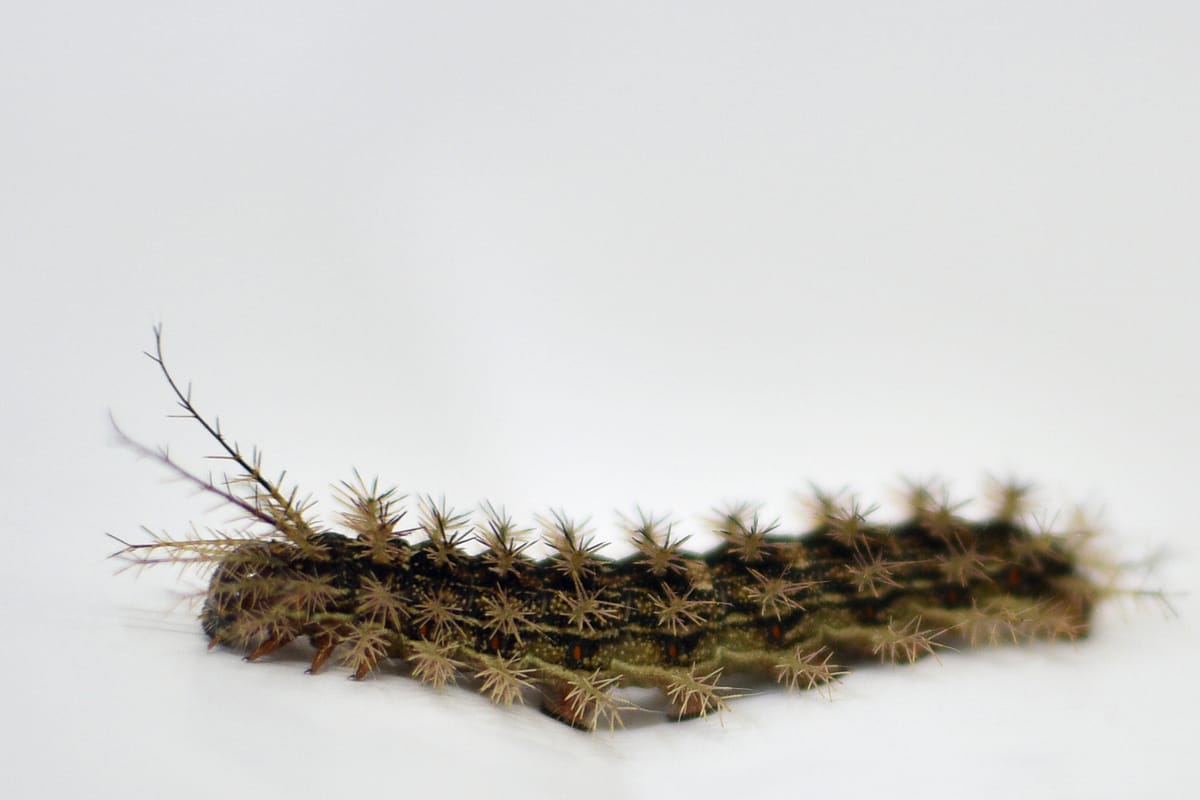In the 1990s, an unlikely culprit sparked an outbreak in southern Brazil. People poured into clinics with severe bruises and mysterious, gangrene-like symptoms. Some patients even suffered brain bleeds and died. The cases initially baffled researchers, who investigated patients’ accounts by probing the surrounding lands and trails. Site after site, they found Lonomia obliqua larvae: two-inch caterpillars with cactus-like spines out of their greenish brown bodies.
You don’t want to mess with Lonomia obliqua’s prickly prepubescent hairs. If you touch or step on its clumps of spines, venom trickles into your bloodstream, carrying with it procoagulants that spread clots across your body. The venom can deplete your blood’s ability to clot when you actually need it, heightening the risk for internal bleeding and hemorrhage. Lonomia caterpillars cause painful, bloody deaths.
Brazilian officials recorded 600 stings between 1989 and 1996, including 12 deaths, cementing L. obliqua’s place as the world’s deadliest caterpillar. The situation has only gotten more dire: between 2007 and 2017, researchers documented more than 42,000 stings and roughly 250 serious poisonings—only now, there’s an antidote.



